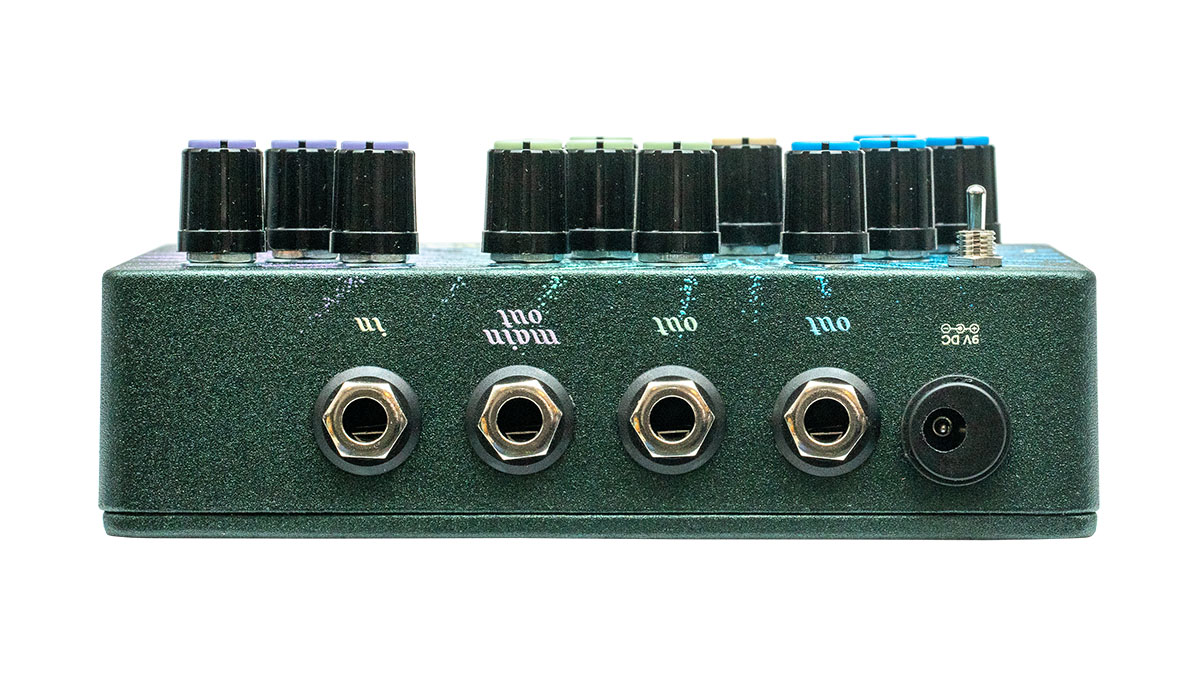A distortion pedal with 13 knobs? Old Blood Noise Endeavors’ Beam Splitter makes three copies of your signal then adds weird delays to taste
The Beam Splitter is a distortion like no other. Well, OBNE calls it a Triple Tracker Distortion and has onboard delay up to 125ms, with a Deviate dial for messing with the repeats
Old Blood Noise Endeavors makes guitar effects pedals that defy easy description and has just launched the Beam Splitter, a distortion pedal augmented by an off-kilter delay that is one of the most original stompboxes we have seen this year.
Just look at all those controls. Yes, there are 13 dials all in, with a Gain toggle switch for good measure, and a soft-touch footswitch for activating the effect. There is a lot going on with this pedal, a pedal that OBNE describes as a Tripe Tracker Distortion – in short, it takes your electric guitar signal, makes three copies of it, and then lets you add distortion and delay to it.
The idea is that you can turn one guitar and make it massive sounding. You can also make it strange sounding, with one of the aforementioned controls a Deviate knob that adds some randomisation to the repeat times on the delay for a natural chorusing effect. Yes, it’s a distortion but buckle up because there are “strange filters, flangers, lo-fi vibratos, and trailing slap-back echoes” to be found here, too.

Each of the three copied signals are processed by three different drives – Purple, Green and Blue – each with their own controls. The tried and tested triumvirate of Gain, Volume and Tone dials offer a reassuringly conventional format for shaping these drive sounds.
This means you can have three different overdrive sounds coming from the pedal. These sounds can be all sent to your amp in parallel mono, or you can split them up individually.
The drives are all voiced quite differently. Purple is a hard-clipping distortion, the most heavy and compressed of its drive voicings, and is described as the core sound of the Beam Splitter.
Green sits at the opposite end of the spectrum, with soft and hard-clipping it is the brightest sounding drive. Blue, meanwhile, is a transistor-based drive circuit and “the most neutral and reactive”, packing an ordnance of gain that sits somewhere in the middle of the Purple and Green circuits. Helpfully, the dials are colour-coded.
Want all the hottest music and gear news, reviews, deals, features and more, direct to your inbox? Sign up here.


One of the effects of all this is to make it sound as though three guitars are playing in unison but there’s plenty of room for experimentation with that Decay knob interacting with the Time control to add “intense filtering or trailing delays” to the drive.
You can hook the Beam Splitter up with an expression pedal to control that Deviate control. The top-mounted jacks should make it a little easier to find some room on the pedalboard, but are also necessary to accommodate those routing options.
The Beam Splitter is available now, priced £/$229. See Old Blood Noise Endeavors for more details.
Jonathan Horsley has been writing about guitars and guitar culture since 2005, playing them since 1990, and regularly contributes to MusicRadar, Total Guitar and Guitar World. He uses Jazz III nylon picks, 10s during the week, 9s at the weekend, and shamefully still struggles with rhythm figure one of Van Halen’s Panama.
